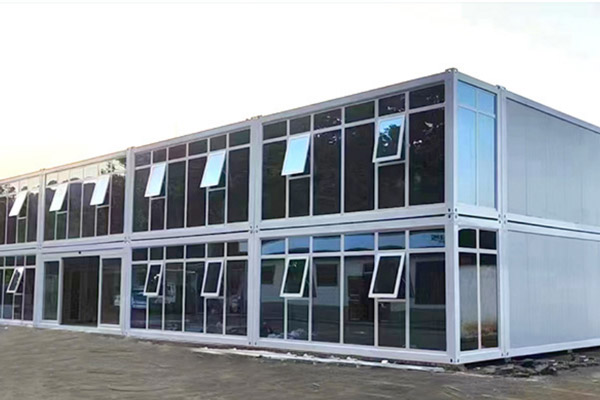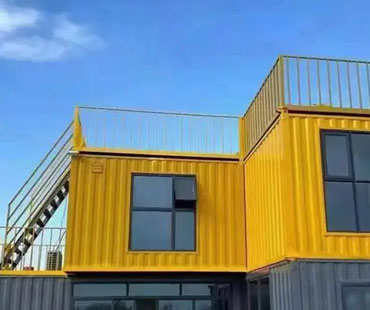In today’s globalized economy, containers have become the backbone of international trade, enabling goods to move seamlessly across oceans, railways, and highways. As trade volumes continue to increase and supply chains become more complex, the design of shipping containers has evolved to meet dual objectives: ensuring the safety and protection of cargo while optimizing transportation efficiency. Modern container design is no longer just about providing a box for goods—it integrates advanced materials, structural engineering, and logistical innovations to address the multifaceted demands of global commerce.
1. Advanced Materials for Structural Strength and Weight Reduction
One of the primary concerns in container design is achieving a balance between durability and weight. Traditional containers were primarily made of steel, which provided high strength but was relatively heavy, impacting fuel consumption and handling efficiency. Modern containers often incorporate high-strength, lightweight alloys or reinforced steel structures combined with corrosion-resistant coatings. These materials maintain the structural integrity needed to protect goods under rough handling conditions and harsh marine environments while reducing the overall weight of the container.
The reduction in weight translates directly to transportation efficiency. Lighter containers allow ships, trucks, and trains to carry larger volumes without exceeding legal or operational weight limits. Furthermore, lighter containers require less fuel during transportation, reducing both operational costs and carbon emissions, which aligns with the increasing global emphasis on sustainable logistics.
2. Enhanced Structural Design for Cargo Protection
Modern containers are designed with reinforced corners, double-walled structures, and specialized flooring to withstand stacking loads and impacts during transit. The corners of containers, often referred to as corner castings, are engineered to bear the weight of stacked containers on ships and in ports. Reinforced side walls and roofs protect cargo from impacts, wind pressure, and environmental hazards.
Flooring materials have also evolved to improve cargo protection. Marine-grade plywood, bamboo composites, and aluminum floors are commonly used, providing strength to bear heavy loads while offering resistance to moisture and pests. For sensitive cargo, containers may be equipped with cushioned inserts or modular pallets to prevent movement and absorb shocks during transit.
Additionally, the ability to seal containers securely against water, dust, and contamination has become essential. Modern designs include gaskets, airtight doors, and lock mechanisms that protect not only the physical integrity of goods but also their quality, particularly for perishable and fragile items.
3. Standardization and Intermodal Efficiency
The standardization of container dimensions, primarily under the ISO 668 standard, is crucial for transportation efficiency. Standard sizes such as 20-foot and 40-foot containers allow seamless integration across ships, trucks, and railcars, eliminating the need for repacking or special handling at transfer points. Standardized container design also enables automated handling systems, such as gantry cranes and reach stackers, to operate efficiently, reducing loading and unloading times.
Moreover, containers are designed to optimize space utilization within vehicles. Modern 40-foot high-cube containers, for instance, offer an extra foot of height, allowing shippers to maximize volumetric capacity without increasing footprint. By leveraging these standardized dimensions, logistics operators can plan stowage, optimize cargo weight distribution, and enhance overall supply chain efficiency.

4. Specialized Containers for Diverse Cargo Needs
Modern container design also addresses the diverse nature of global cargo. Beyond the standard dry container, specialized designs include refrigerated containers (reefers), tank containers, flat racks, and open-top containers. Refrigerated containers maintain precise temperature and humidity control, essential for perishable food, pharmaceuticals, and sensitive electronics. Tank containers safely transport liquids and gases under controlled pressure and temperature conditions. Flat racks and open-top containers accommodate oversized or irregular cargo, while still providing structural integrity during transit.
These specialized designs are engineered to protect cargo against unique risks while integrating seamlessly with standard handling equipment. The ability to match container type to cargo characteristics ensures that goods arrive in optimal condition without sacrificing logistical efficiency.
5. Innovations in Loading, Securing, and Handling
Container design also incorporates features that facilitate cargo loading, securing, and handling. Twist-locks, lashing points, and internal rails allow cargo to be fastened securely, reducing the risk of shifting during transit. Improved door designs with wider openings and stronger hinges simplify loading and unloading, particularly for bulk or palletized cargo.
Some modern containers incorporate modular or collapsible inserts, which allow the same container to be adapted for different cargo types. This flexibility enhances utilization rates and reduces the need for multiple container types in the fleet, contributing to cost efficiency and environmental sustainability.
6. Integration of Smart Technologies
Beyond physical design, modern container efficiency increasingly relies on digital innovations. Smart containers equipped with GPS tracking, sensors, and IoT technology provide real-time monitoring of location, temperature, humidity, and shock exposure. This data-driven approach allows logistics operators to detect potential issues early, adjust handling protocols, and verify that cargo conditions remain within safe thresholds throughout transit.
By integrating sensors and connectivity, modern container design bridges the gap between physical protection and operational efficiency. Data analytics can optimize routing, reduce dwell times at ports, and even improve container utilization by predicting demand patterns.
7. Balancing Protection and Efficiency
The essence of modern container design lies in balancing protection and efficiency. Robust materials, reinforced structures, and secure sealing ensure that goods remain intact and compliant with regulatory standards. Simultaneously, lightweight materials, standardized dimensions, and advanced handling features ensure that containers can be transported efficiently across multiple modes without excessive cost or energy consumption.
Designers continuously optimize container geometry, structural reinforcements, and material selection to minimize weight while maximizing strength. This careful engineering ensures that cargo is protected against environmental and mechanical stresses while transportation systems operate at peak efficiency.
Modern container design represents a sophisticated interplay between engineering, materials science, and logistics optimization. By focusing on both cargo protection and transportation efficiency, contemporary containers enable global supply chains to operate more reliably, cost-effectively, and sustainably. Reinforced structures, lightweight and durable materials, specialized configurations, and smart monitoring technologies collectively ensure that goods reach their destinations safely while maximizing operational performance.
As global trade volumes continue to grow, the evolution of container design will remain a key driver in achieving safer, faster, and more efficient transportation networks, providing the foundation for a resilient and responsive international supply chain.


